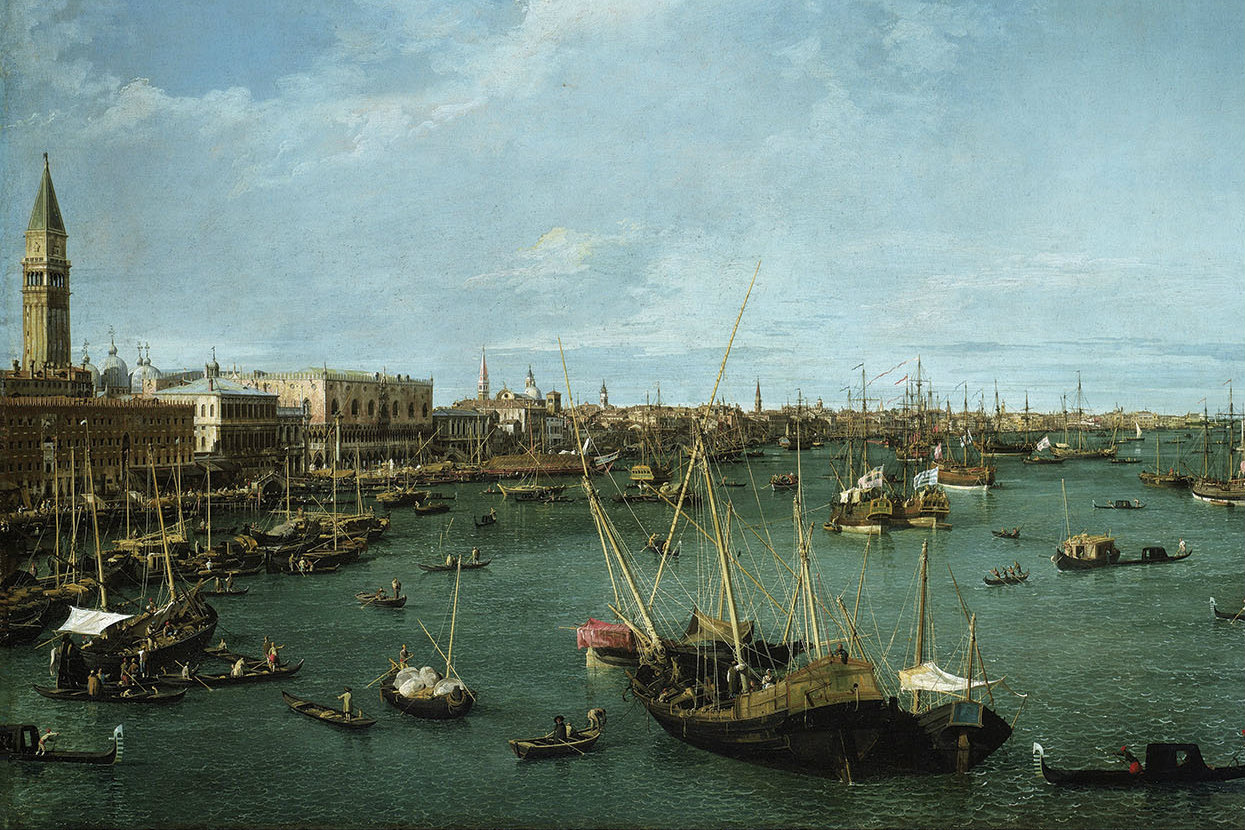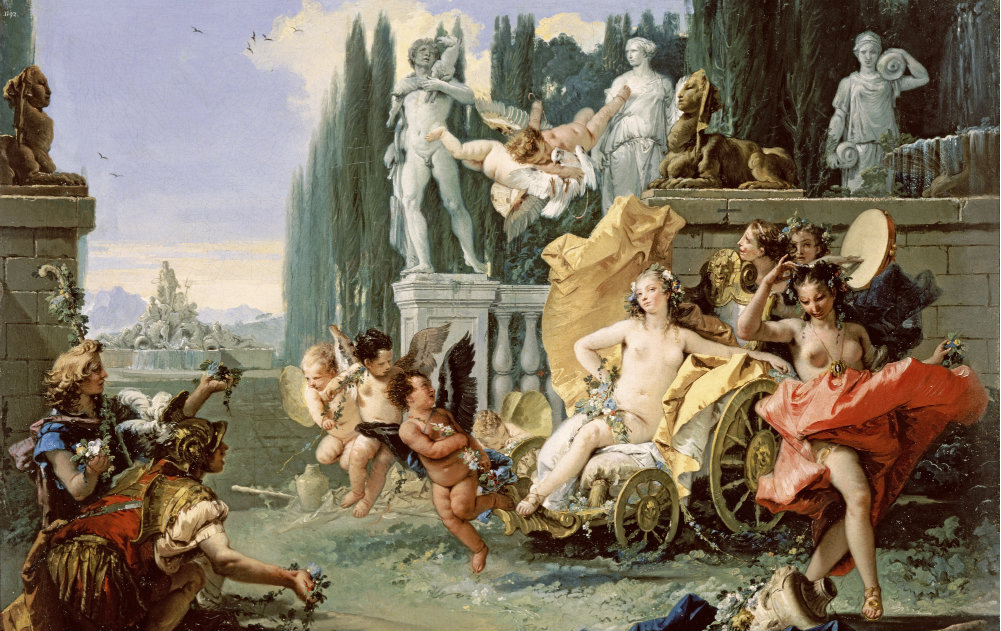Getting Frisky With ‘Casanova’ At The Kimbell
ArtandSeek.net September 6, 2017 13Casanova has become synonymous with ‘womanizer’ – almost entirely because of his 12-volume memoir, ‘The History of My Life,’ published after his death (in badly translated editions that often spiced up the erotica in the original). But he is much more than his ladies’ man reputation would have us think: writer, gambler, diplomat, sharp-eyed socializer, spy, inventor, millionaire and even celebrated prison escapee, the only man, it was said, ever to scheme his way out of the Doge’s Palace in Venice.
A new show at the Kimbell Art Museum, ‘Casanova: The Seduction of Europe’ portrays the glamorous world he lived in during the 18th century, the height of the Age of Enlightenment. The 200-item exhibition is premiering at the Kimbell then goes on to Boston and San Francisco. I sat down at the Kimbell with the show’s co-curator, Frederich Ilchman of the Museum of Fine Arts, Boston, to learn more about a charmer who could name-drop Catherine the Great and Benjamin Franklin. Our extended conversation:
Choosing Casanova as a guide to the 18th century is a no-brainer. He knows everyone from Voltaire to Catherine the Great, he travels throughout Europe from Moscow to England, even visiting Istanbul, and he embodies the Age of Enlightenment itself by defying the church and the nobility’s class restrictions: He re-invents himself from being born poor in Venice to hobnobbing in courts and palaces – and writing it all down.
With all that, how can you focus this show?

Canaletto’s ‘Bacino di San Marco, Venice,’ circa 1738 (detail) – one of four Canaletto views of Venice, Casanova’s hometown, impressively collected in a single gallery at the Kimbell. Museum of Fine Arts, Boston
Well, we wanted to use Casanova as our vehicle. He’s our guide. He will bring the museum visitor right to the heart of 18th-century culture. We have lots of anecdotes from his life. He wrote his famous memoirs, basically the world’s longest autobiography, full of great social asides, cutting commentary, self-revelation and embarrassing anecdotes – it’s all there.
And so everything in the exhibition had to be from Casanova’s lifetime. He was born in 1725, died in 1798. So everything in the exhibition – with one or two exceptions – comes from the 18th century. There are sections about travel or the pleasures of dining, theater and masking. Casanova was a real shape-shifter, a bit of a charlatan – he had a military uniform sewn up for him that was from no known army – but he’s immensely charming.
And so the section on amorous pursuits. These are erotic topics, some of them relatively innocent, other ones really quite explicit and sexy, but all there to conjure up this fascinating world of the 18th century. [The adults-only art is set off in a small, separate room: They’re playing-card-sized images so small, the museum helpfully provides a magnifying glass. You just might discern what these tiny stick figures are up to.]

William Hogarth, ‘The Lady’s Last Stake,’ 1759 (detail). The Albright-Knox Gallery.
Setting aside the sculptors and silversmiths, if you just list the painters in the show – Hogarth, Cannaletto, Joshua Reynolds, to name a few – this would make a remarkable exhibition. But the decision was made to make this a theatrical, immersive experience. Something the Kimbell’s exhibition designers have really come to favor to amplify and organize the material on hand. We walk into galleries and it’s like walking into a salon, complete with decorated walls and staged tableaux. Why?
One reason for these immersive settings is to convey a very important point. We might look at art today in isolation – the masterpiece against the blank wall – but in the 18th century, things were thought of as ensembles, and a room was much more than the sum of its parts. You’d have beautiful paneling and fabrics, and other things like paintings and furniture would go against walls with sculptures.
And then, of course, sometimes the most beautiful works of art would be the clothing that people would wear in these spaces. We’re incredibly fortunate to have several complete outfits on display because so few dresses and coats and stockings have survived over 300 years.
With painters like Fragonard and Boucher, you have gallery after gallery full of bright, pink flesh. This is the great age of the seduction, as the show’s title indicates. And of course, Casanova is pretty much becomes seen as the poster child. A new kind of naughty, brazen hedonism is in the air. And it’s certainly in the art.
Why? What happened?

Giovanni Battista Tiepolo, ‘The Empire of Flora,’ c. 1743 (detail), The Fine Arts Museums of San Francisco.
I think it’s fair to say that a lot of the formality in all levels of life became loosened in the 18th century, and part of it comes from the top. Rulers of countries would often have acknowledged mistresses and lovers, and everyone would take someone on the side. And there’s a real sense – you see this in Casanova’s memoirs – that spontaneous, racy encounters happened all the time.
And if we think about the major artists of the 16th century, boy, most of your work if you’re a painter or sculptor would be for the Church. But by the 18th century, by the mid-1700s and the age of Casanova, rather than make it in the Church, the way to do it would be to attach yourself to Frederick the Great, to Catherine the Great, major rulers in Europe, hoping for an appointment. That’s what Casanova was doing so often in his travels – trying to sell someone on a scheme of his, an invention – like the state lottery he set up in France.
So wealthy, private patrons turn to private subjects. So this is one of the most voluptuous exhibitions I think the Kimbell has put on. Everything here is tactile, it’s all about the ornate and the indulgent. We may not see much of Casanova himself but we see a lot his flashy surroundings. So the entire show — the silver dinnerware, the clothes people wear, the furnishings – it glints with silver and gold.

Venetian console table, gilded wood, c. 1725-50. John and Marble Ringling Museum of Art
I think that’s an important point about just how glamorous and luminous and splendid it all is. And how the art is often about intimate, private scenes. Palaces and grand homes are still being built, of course, but they get filled with paintings that peek behind curtains or at people secretly having fun in gardens.
And that gets back to theatricality, to the world of traveling artists who could shift between classes. Casanova came from a theatrical context. His mother was an actress, he was a violinist. Wherever he went to in a new town, he wanted to be around ballet dancers or musicians and singers. That’s his default. There’s a real sense of glamor in the 18th century and Casanova really embodies this.
Interview questions and answers have been edited for brevity and clarity.









